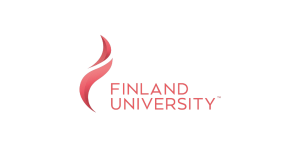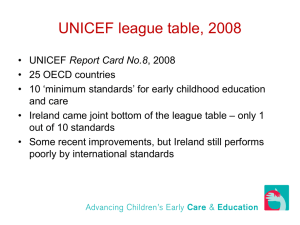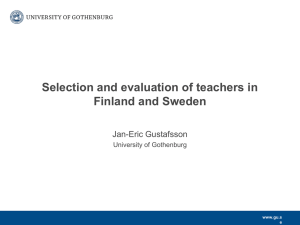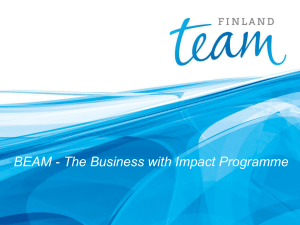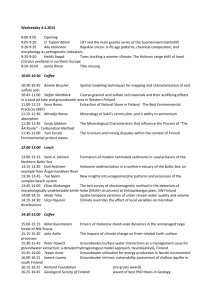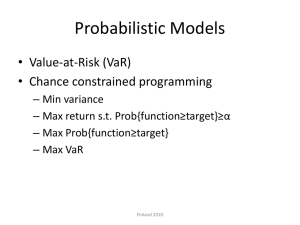Finland_lessons_learned_diff_format
advertisement
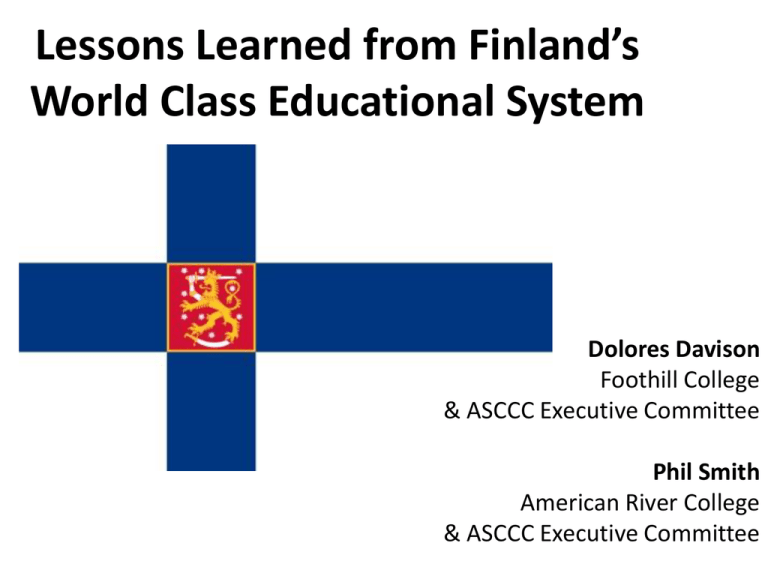
Lessons Learned from Finland’s World Class Educational System Dolores Davison Foothill College & ASCCC Executive Committee Phil Smith American River College & ASCCC Executive Committee Finland’s Education System Prior to 1960s/1970s Finland had a somewhat mediocre educational system: • Low Levels of Educational Attainment • Deep Inequality and Elitist Educational System • Modest Student Achievement • Teachers Without Proper Education • Big Performance Gap in Comparison With Other Organization for Economic Co-operation and Development (OECD) Countries Source: Key Drivers of Educational Performance in Finland, Pasi Sahlberg, 2010. Today… Finland has: • High Graduation and Low Drop-out Rates (99% Complete Compulsory Basic Education) • High Rates of Higher Education (Three out of Five Young Finns Enroll in and 50% Complete State-funded Higher Education After Upper Secondary School) • Consistently High Performance (Often the Top Scorer) in International Assessments of Student Achievement With Other OECD Countries • Moderate Educational Spending • Equitable Outcomes and Equal Opportunities • Teachers With Extensive Education (Highly Selective Profession) Source: Key Drivers of Educational Performance in Finland, Pasi Sahlberg, 2010. Finland Stats Population: •5.35 million people Ethnic mix: •Finn (93.4%) •Swede (5.6%), •Russian (0.5%), •Estonian (0.3%), •Roma (0.1%) Largest City: •Helsinki •Population: 564,521 California Stats Population: • 37.25 million people Ethnic/Racial mix: • White (40.1%) • Latino (37.6%), • Asian (12.8%), • African-American (5.8%), • Native American/Alaska Native (0.4%) • Native Hawaiian/Pacific Islander (0.3%) Largest Cities: • Los Angeles (pop. 3,792,621) • San Diego (1,307,402) • San Jose (945,942) Finland, California: Really? Comparable at All? How Did the Finns Achieve These Remarkable Results? • Greater Standardization? • Increased Focus on Core Subjects like Mathematics, Reading, and Composition? • Determine Desired Educational Outcomes in Advance; Then Focus Teaching on Achieving Those Outcomes? • Employ Innovations From the Business World? • Greater, High Stakes Test-Based Accountability for Schools and Teachers? • All of the Above? Er, well, … • Greater Standardization? • Increased Focus on Core Subjects like Mathematics, Reading, and Composition? • Determine Desired Educational Outcomes in Advance; Then Focus Teaching on Achieving Those Outcomes? • Employ Innovations From the Business World? • Greater, High Stakes Test-Based Accountability for Schools and Teachers? • All of the Above? Instead of More Standardization… < Greater Personalization Instead of Exclusive Focus on Literacy and Numeracy… < Deep and Broad Learning Instead of “Teaching to the Test” … < Teachers “Own” the Curriculum Instead of External Innovations From Business… < Finns Rely on Proven Educational Techniques Instead of High Stakes,Test-Based Accountability… $ $$ $$$ < Trust and Responsibility What Can CCCs Learn or Reaffirm About Ourselves From Finland? Some possible themes: • Individuality/Personalization • Equal Opportunity • Trust and Professional Responsibility Importance and Worth of the Individual Individuality • Resistance to Prescriptive Standardized Norms • Acknowledgement of Strengths and Weakness • Avoid “Deficit Model” Thinking • Provide Extensive Guidance, Advice, and Support • Track Individual Student Progress Equal Opportunities Promoting Equity • Intention to Provide Equal Educational Resources (e.g., urban-rural, rich-poor, giftedspecial needs) • Wrap-Around Support in Mainstream Environments • Equity-Excellence Hypothesis Societal Trust in Educators • Trust Between Educators and Citizens Developed Over Time • Highly Selective Profession • Incremental Improvements Rather Than Reform Questions or Insights? Bibliography • Anderson, J. (2011, December 12). From Finland, an intriguing school-reform model. The New York Times. Retrieved from http://www.nytimes.com/2011/12/13/education/from-finland-an-intriguingschool-reform-model.html • Partanen, A. (2011, December 29). What Americans keep ignoring about Finland’s school success. The Atlantic. Retrieved from http://www.theatlantic.com/national/archive/2011/12/whatamericans-keep-ignoring-about-finlands-school-success/250564/ • Sahlberg, P. (2007, March). Education policies for raising students learning: the Finnish approach. Journal of Education Policy 22(2), 147-171. • Sahlberg, P. (2010, April). Key drivers of educational performance in Finland. International Perspectives on U.S. Education Policy and Practice: What Can We Learn From High Performing Nations? Retrieved from http://www.slideshare.net/internationaled/pasi-sahlberg-finland • Sahlberg, P. (2011). Finnish lessons: What can the world learn from educational change in Finland?. New York: Teachers College Press.


